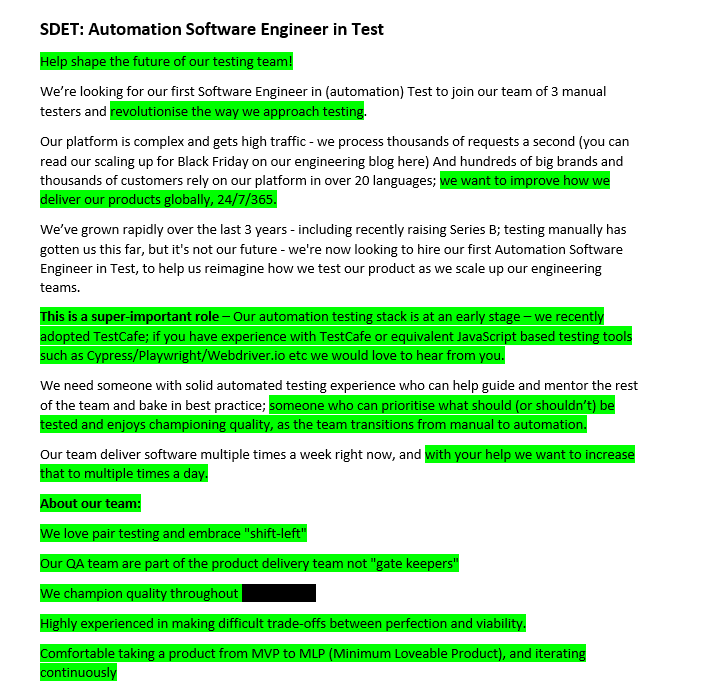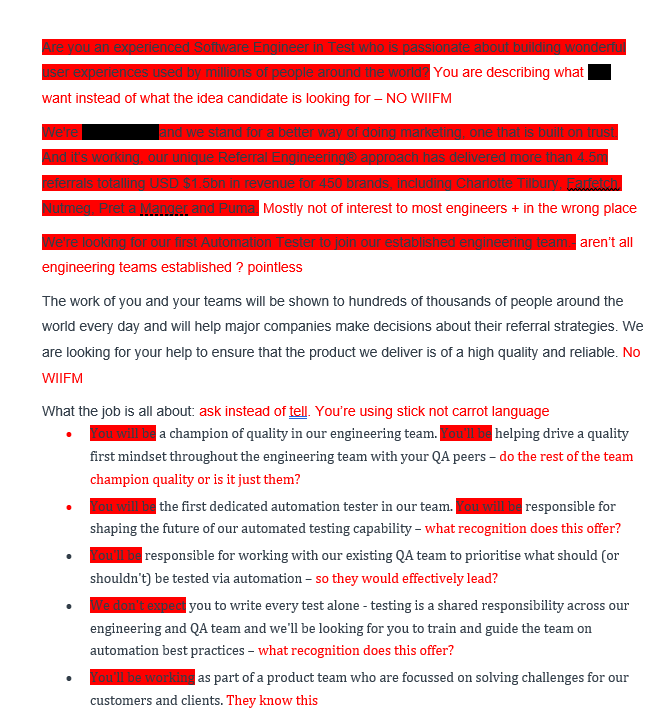Design Thinking to Eliminate Mis-hiring
Design-thinking is a mindset and approach to problem-solving and innovation anchored around human-centred design.
IDEO defines it as:
By focusing on human needs, design thinking ensures that solutions are deeply relevant to the people they serve.
Most companies understandably focus on their own needs when hiring – creating job descriptions and outreach efforts focusing on the requirements of the role – this approach creates a poor job seeker experience. Job seekers are more interested in understanding what the role offers them and how it can help them achieve their own goals. This one-sided format attracts only the 20% of the talent pool actively seeking jobs – often motivated by short-term, tactical career moves. While this may be sufficient for lower-impact IC roles, it should be avoided for leadership positions and high-impact roles requiring mastery-level expertise.
At TalentCentric, we use a design-thinking approach centred around JTBD (Jobs-to-be-Done) Theory that places the potential job seeker at the centre of the experience. We focus on conveying what high performers truly value: meaning in their work, opportunities for growth, challenges to overcome, goals to accomplish, and room to reach their full potential. While these elements are always inherent in roles, they are rarely communicated effectively.
We ask a lot of why questions: why would a top DevOps person be interested in this job ? why would a quota smashing sales person with 15 years experience apply for this role ? what does a CISO with 10 years experience need to know about this role to get them interested….
Here’s what we know:
- Changing jobs means starting over. Successful individuals must leave a secure position where they’re valued, to build trust, credibility, and, hopefully, relationships with new colleagues all over again.
- 99% of people dislike interviews and the process – unless desperate, most high performers are reluctant even when the role is especially compelling.
- Traditional job descriptions lack the “What’s In It For Me” (WIIFM) factor necessary to capture the attention of busy, high-performing professionals.
Design-thinking inspired our Assured Delivery Model
We first implemented the design thinking methodology as Talent Acquisition Leads at a Series B scale-up struggling to double its size to 300 employees during a challenging growth phase. Read the full post on why.


